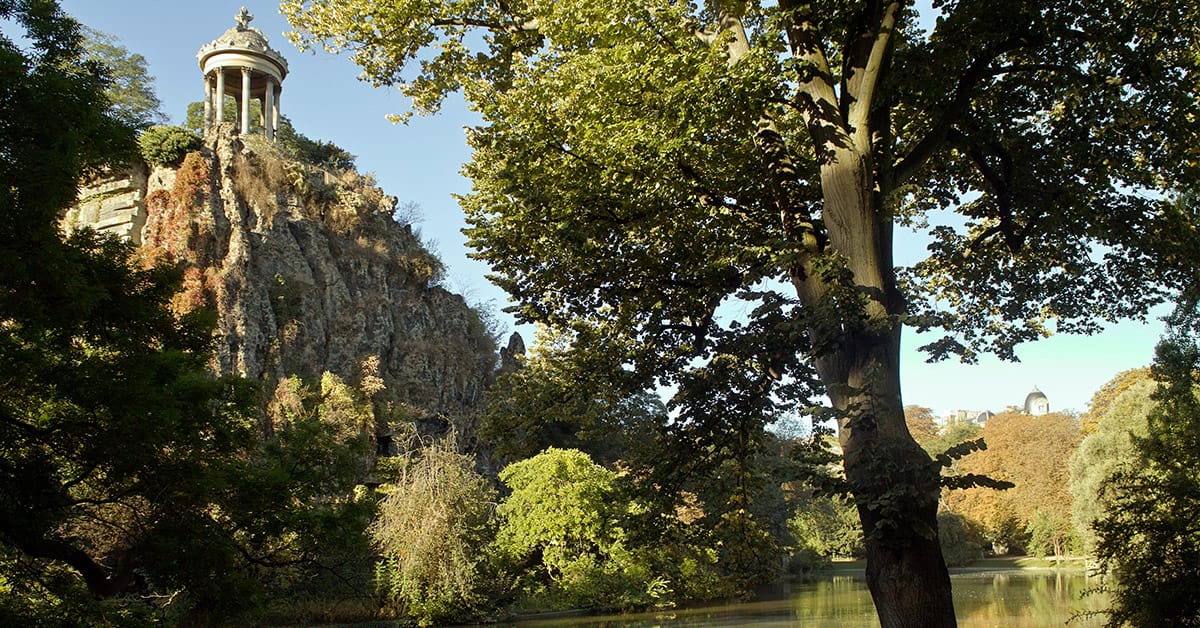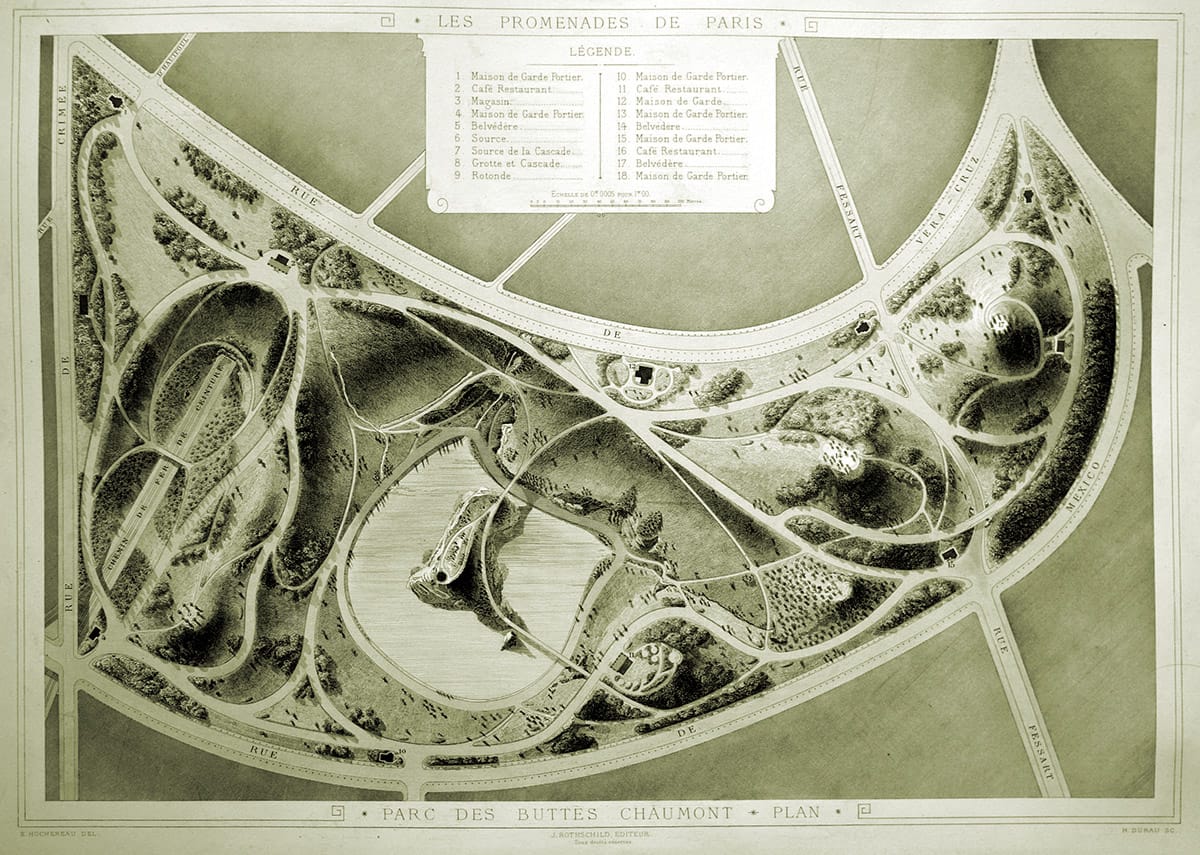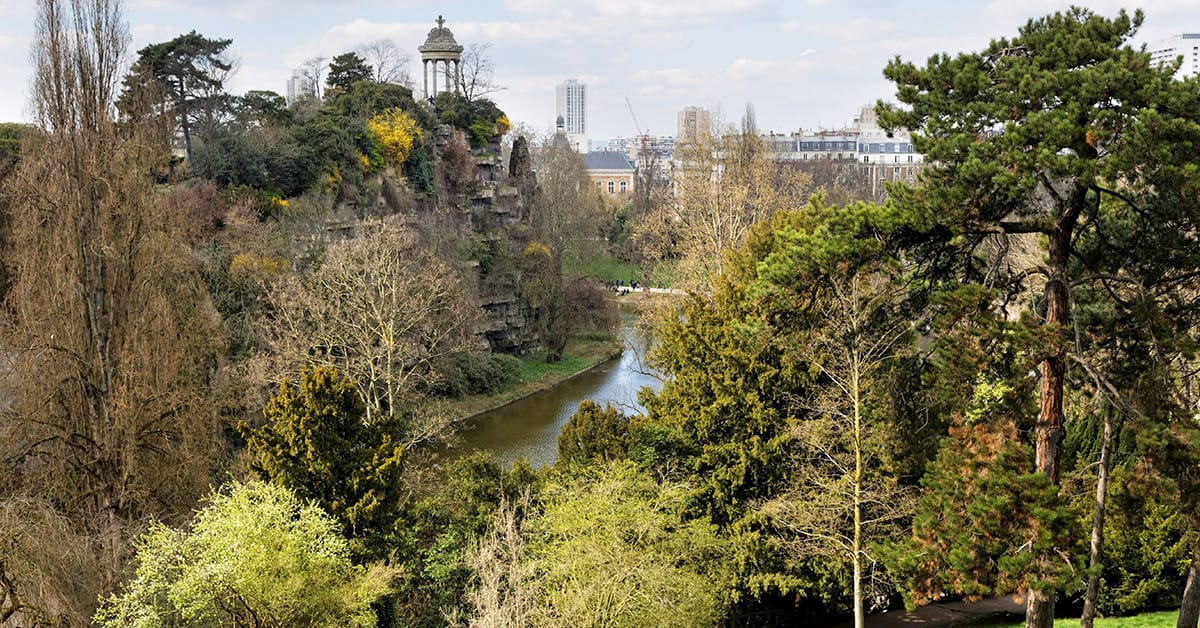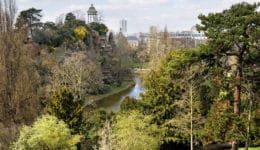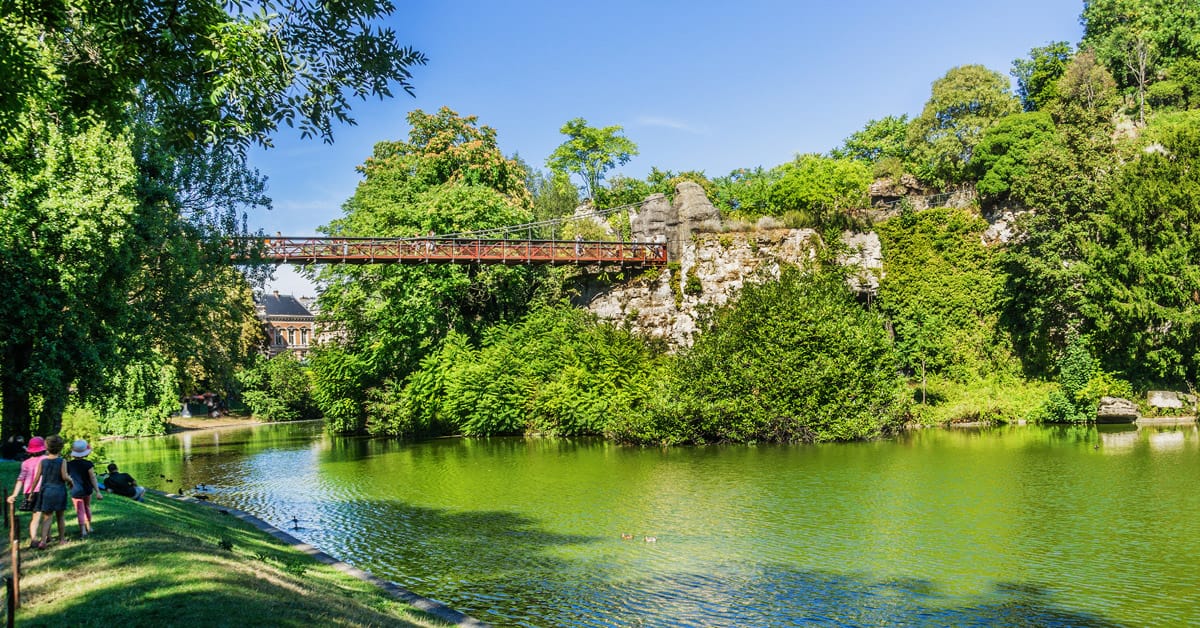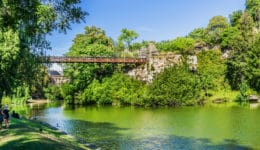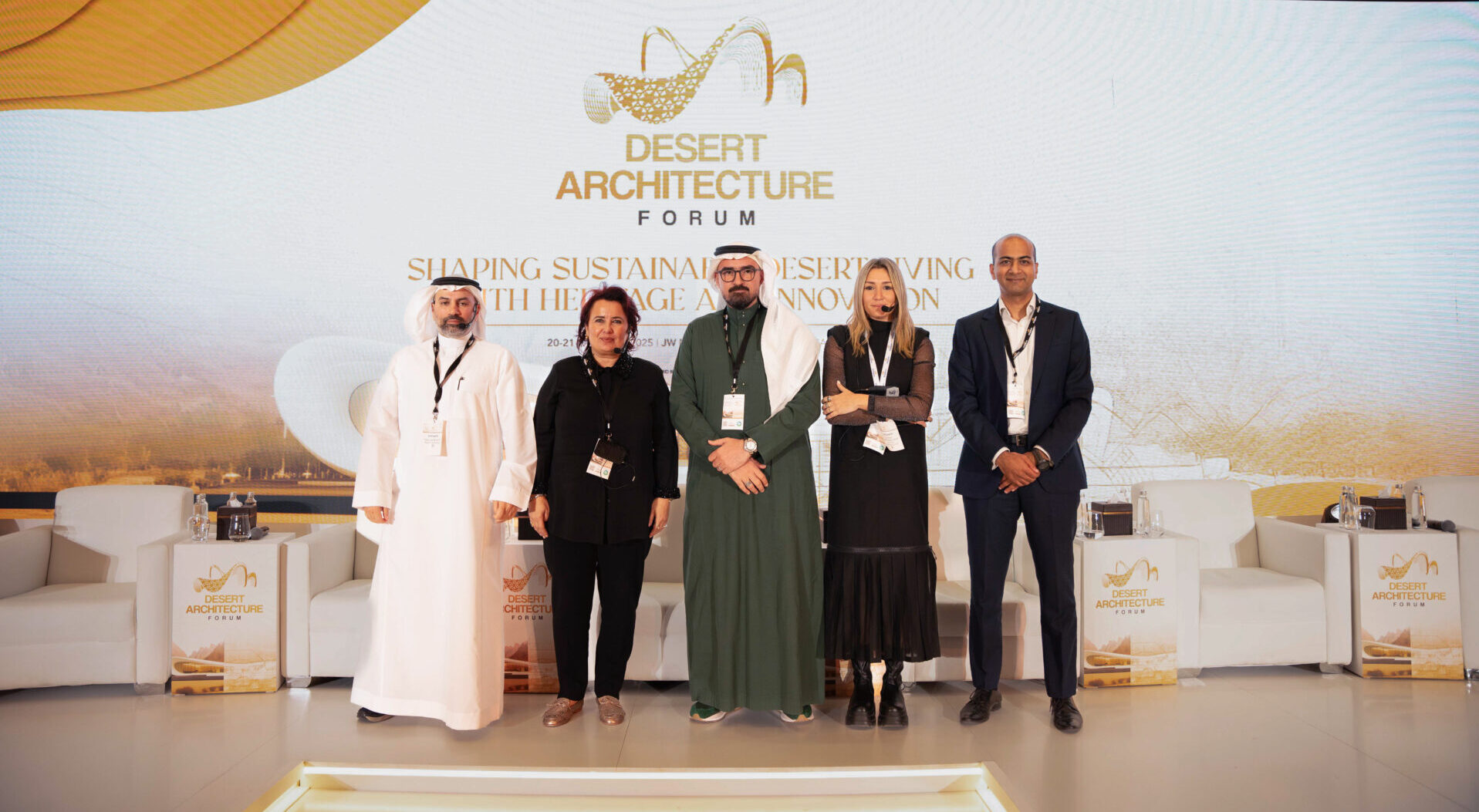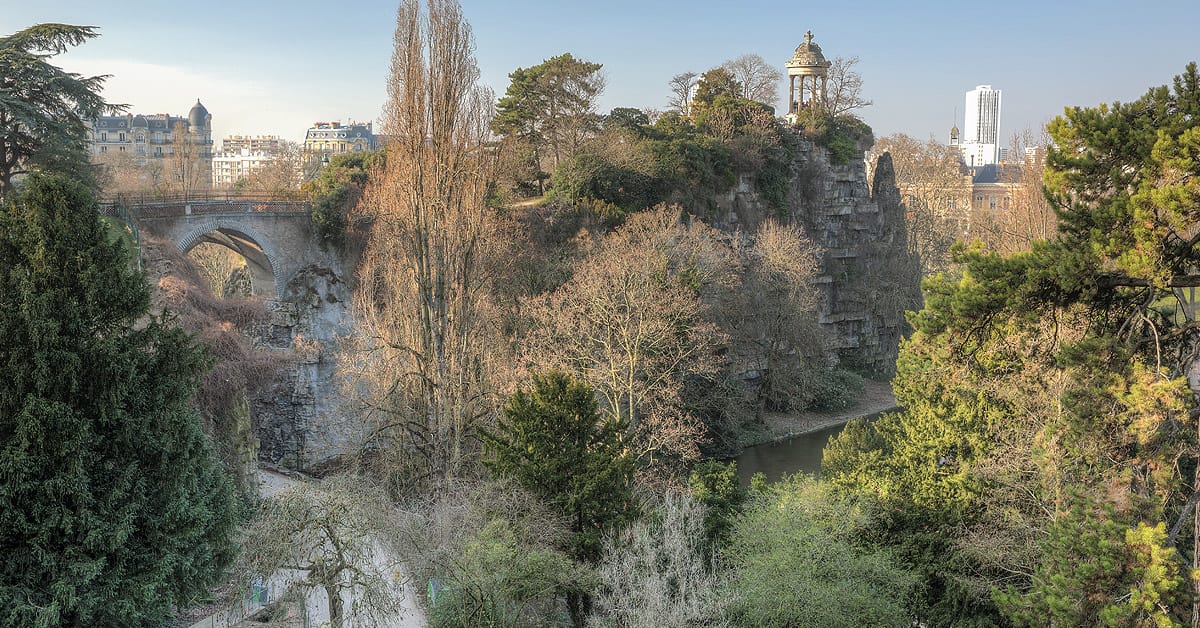 Parc des Buttes-Chaumont, Paris, France - Photo © Guido Vermeulen-Perdaen
Parc des Buttes-Chaumont, Paris, France - Photo © Guido Vermeulen-Perdaen
The idea of turning former industrial sites into public parks has become more common in recent years, but it is not new. In the spring of 1867, the Parc des Buttes-Chaumont opened on a difficult site previously used for extracting gypsum and dumping urban waste.
The 25-hectare park — the third largest in Paris — incorporated the rugged topography of the former quarry to great effect. The remnants of a rocky cliff were sculpted into an island in the middle of a newly created lake. An excavated cavern became a grotto with a waterfall pouring through an opening above. The rolling hills, newly planted with vegetation on a bed of imported topsoil, became a favorite picnic spot for people of all classes.

Parc des Buttes-Chaumont, Paris, France – Panorama – Photo © DXR / Wikimedia Commons
The design and construction of the Parc des Buttes-Chaumont was led by a multi-disciplinary team led by the engineer J.-C. Alphand, with key contributions by landscape architects E. André and J.-P. Barillet-Deschamps. It was a marvel of technology as well as landscape architecture, with cascades fed by the new municipal water system, Portland cement used to seal the lake bottom, and a 64-meter suspension bridge designed by Eiffel. Although the overtly artificial nature of the park was denounced by some critics, over time the public came to embrace this human-made space for what it was.
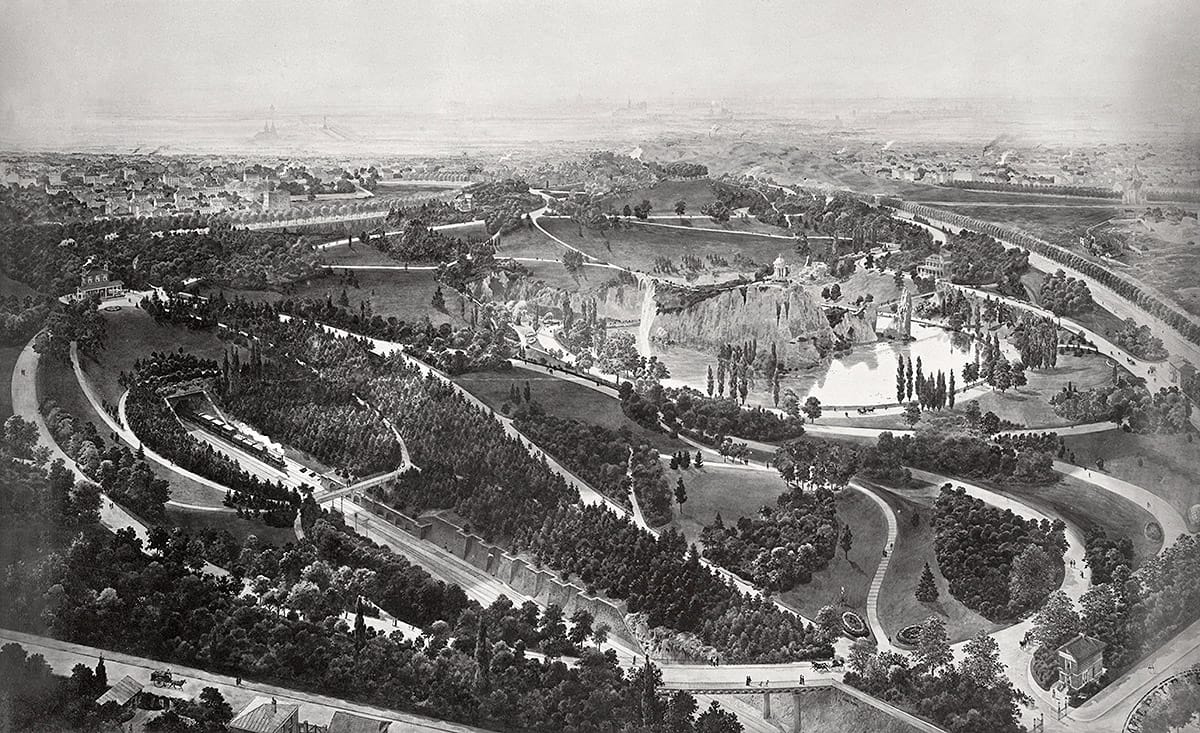
Parc des Buttes-Chaumont, Paris, France – Historic Drawing – Photo © Government of France / Wikimedia Commons
A three-year renovation completed in 2015 brought the park up to 21st-century standards of sustainability and accessibility. It now has a water-recycling system, more biodiverse and climate-specific plantings, and smooth paths for improved accessibility. What began as a technological intervention is now a beloved cultural landscape of modern Paris.








